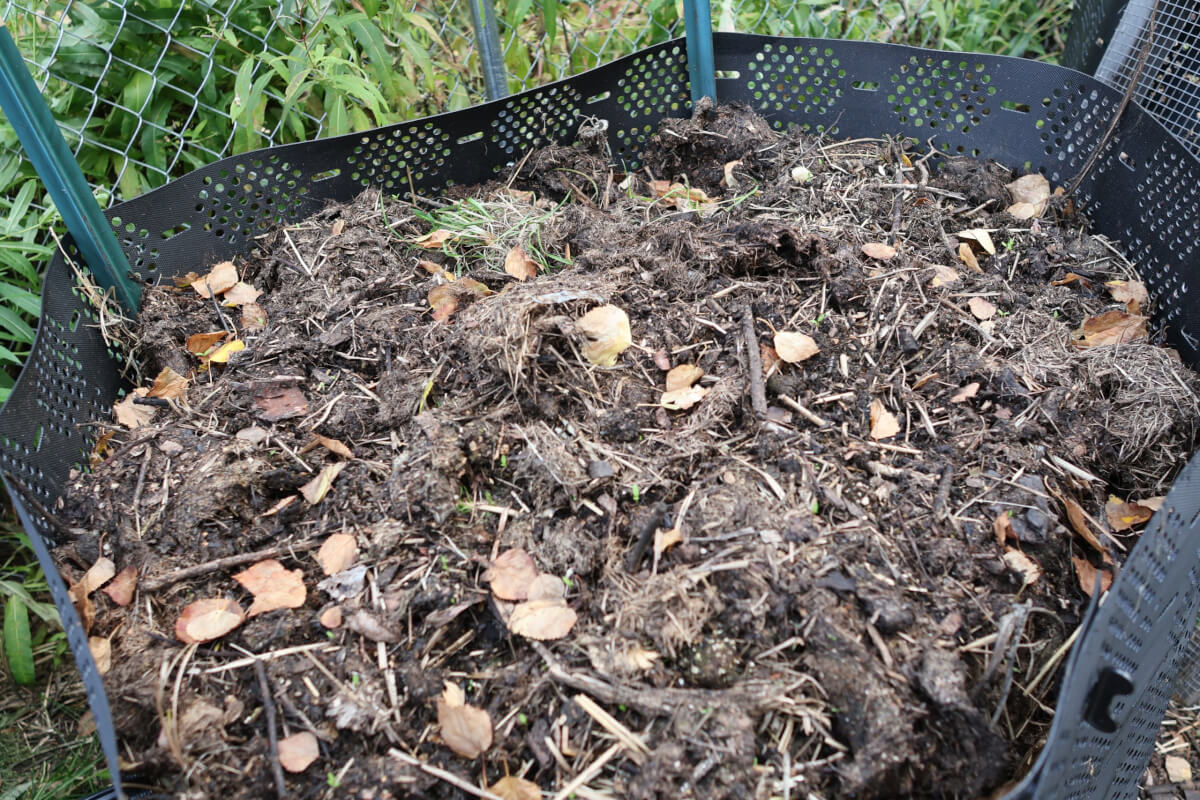We’re always amused at just how many of you like to look at our compost piles over the season. So, we’re going to show you our piles as we start the descent into winter and talk about what our general goals are for winter composting.
We’ve talked a fair bit about how we leverage both hot and cold composting methods, using hot composting in the summer and (perhaps obviously, given our northern disposition) cold composting during the winter. This alternating methodology is more out of necessity, it’s just not practical do hot composting when your piles are frozen and it’s 40 below outside.
For any fresh piles, we generally want to get them as big as we can. All our end-of-season stuff goes in, as does our final mowing and all the other compostable’s we can drum up. Some years we even combine multiple piles we’ve started that year, just prior to winter. We’re definitely aiming for a nice hot compost to kick off as temperatures drop, brought about by proper mixtures of nitrogen (~20%) and carbon (~80%). This ensures a healthy quantity of microbes going into winter, which will work our materials exceptionally well over the very long winter. We’ve found this key to getting a really productive cold composting going on over the winter.
These fresh piles will be turned (and often combined) sometime in the beginning of next spring. We’ll hot compost those piles over the summer and often can get a late season compost harvest out of them. More often than not, though, we opt to push them through another cold composting cycle, after a second turn, for maximum compost production.
So, for these piles that aren’t quite ready yet (typically piles on their first turn) we make sure to turn and mix them again, sometime prior to the freeze. We finished our turns 2-3 weeks ago. This always invigorates the pile and again, increases the microbe counts going into winter. Having those high populations of active microbes will ensure we can harvest these piles come the next spring, at least once the piles actually thaw out.
If you’re keeping track? This means: Initial hot composting cycle, turn/combine, winter composting cycle, turn/combine, hot composting cycle, turn/combine/optional harvest, winter composting cycle, then harvest. Remaining material is infused with more nitrogen and brought through that process again. Given the time it takes us to get efficient composting, we’ve scaled our composting operation up to 1,000 gallons total. We rarely use all that capacity at once, but rather it’s there to absorb the ebbs and flows of material ingestion and to facilitate pile turns.
This method of boosting microbe productions just prior to the winter has proven an excellent technique for us. We’ve been around cold composting piles before, but this is more like super-charging the cold composting process. We get excellent breakdown and very thorough cold composting over each winter. Even with temps pushing negatives for much of it!


